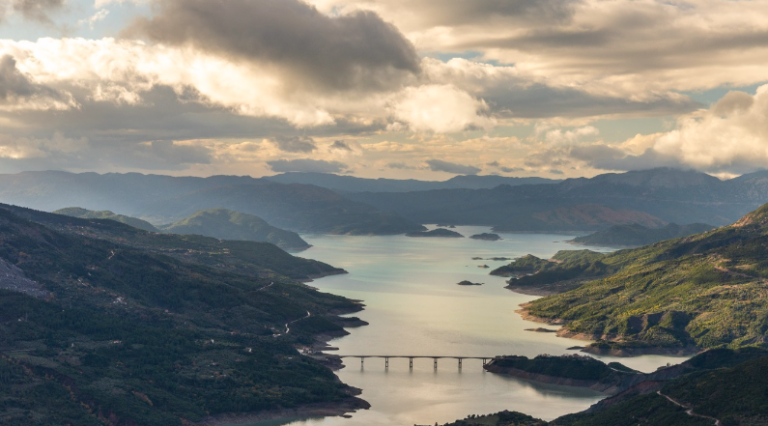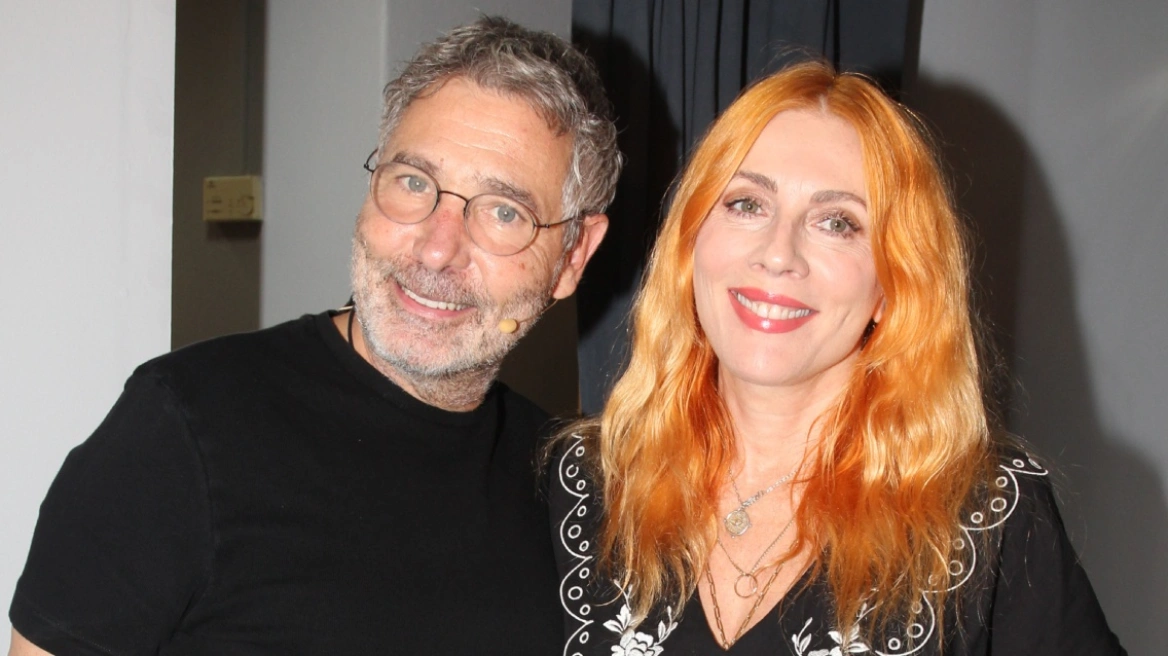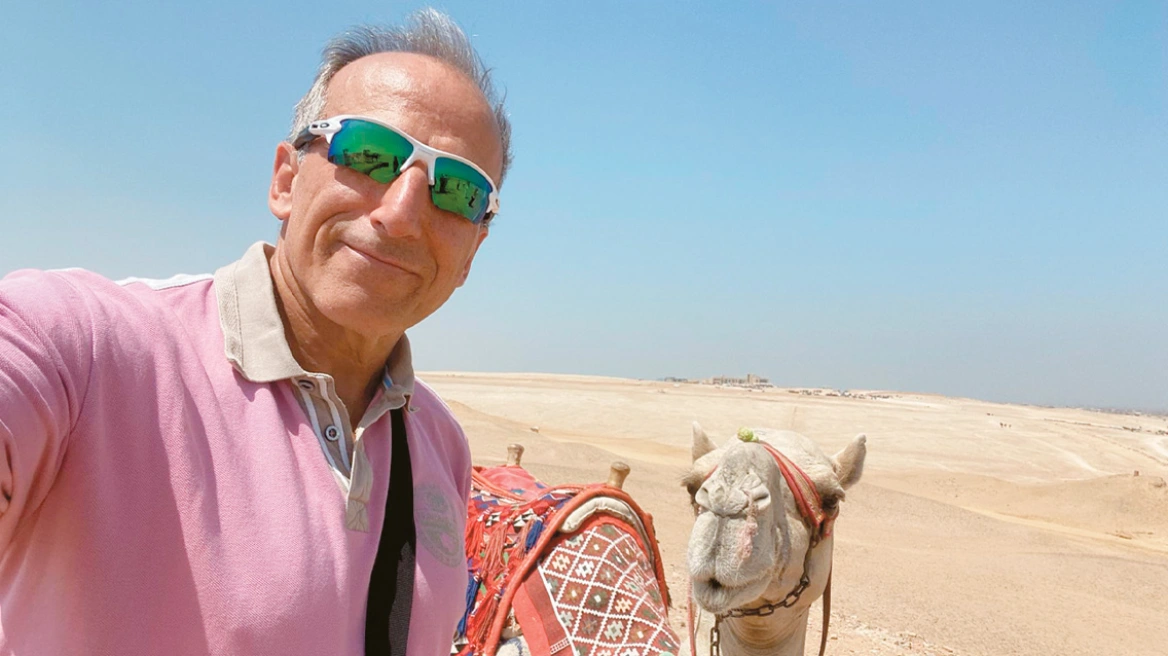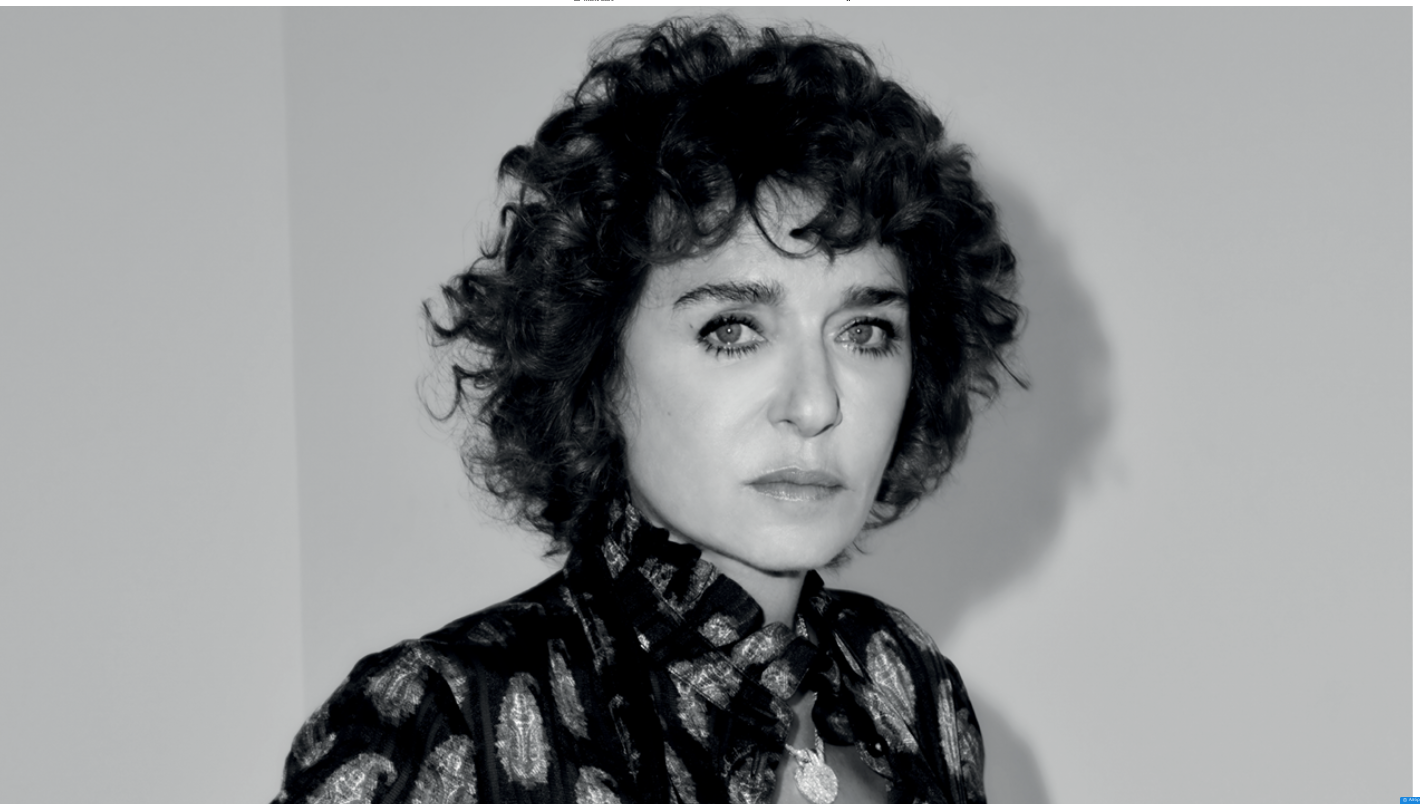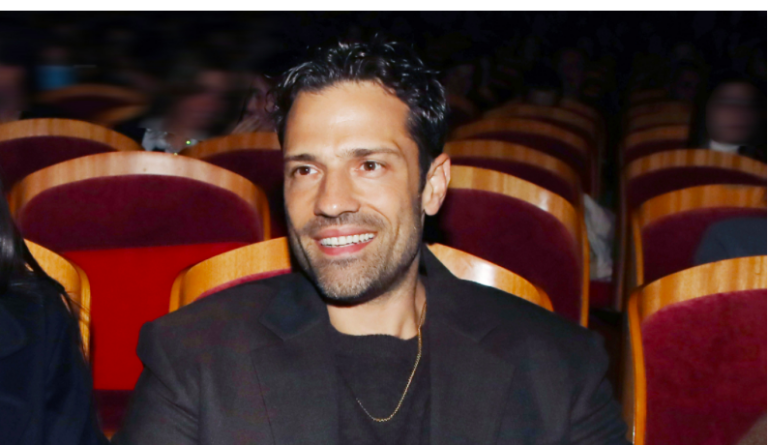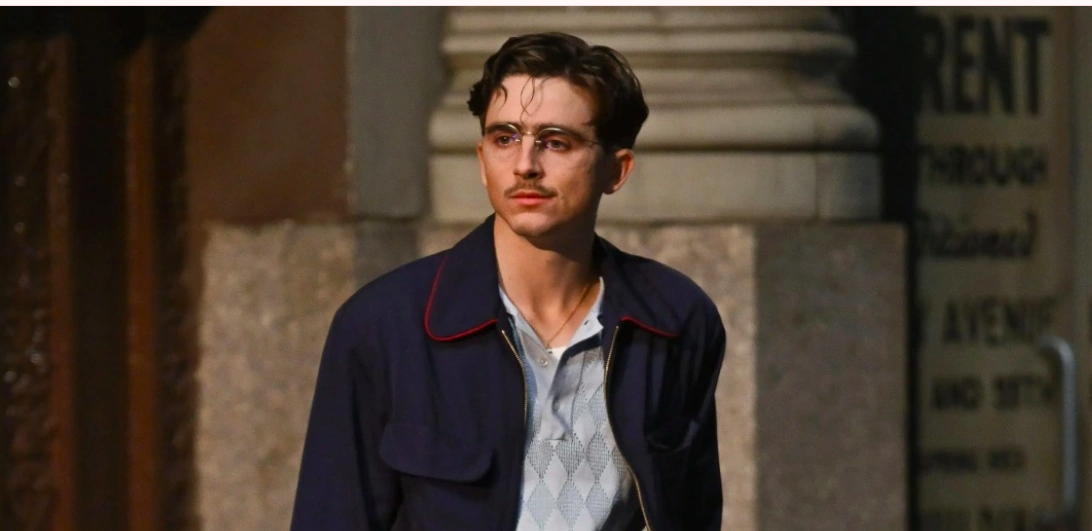We had been planning it for a long time. We were looking for the perfect season to visit Evrytania. Chrysa, a long-time friend, always speaks with love about its stunning landscape. The most mountainous region of our country is a destination full of mystery, a place where you easily lose yourself in its embrace, its scents, and its people. Our destination was the village of Western Frangista, located almost 40 kilometers from Karpenisi. This journey translates into almost an hour of driving, surrounded by unique natural scenery.
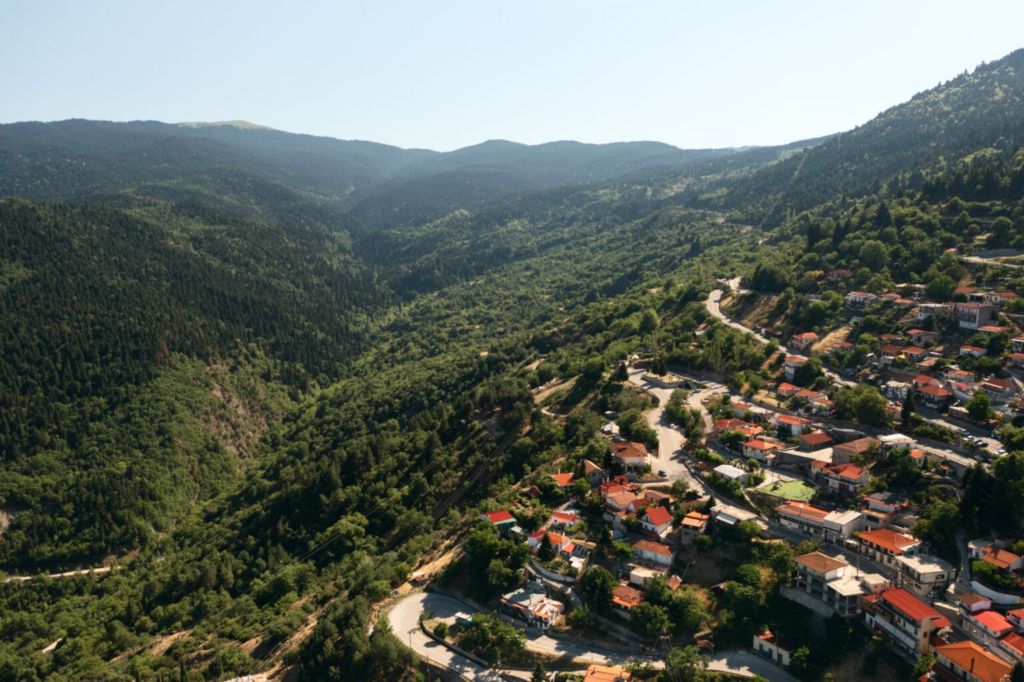
Direction towards Lamia:
We started early because, especially during the winter months, the “game” of light is always a pursuit that moves us emotionally. The drive on the National Road until almost Lamia was calm. In the area of Yliki, the clouds created beautiful shadows over the lake that supplies Athens with water. We made a stop and tried wraps with chickpeas and avocado that we had brought from home. We left Lamia on our right and used the new section of the highway, Lamia-Karpenisi, to continue.
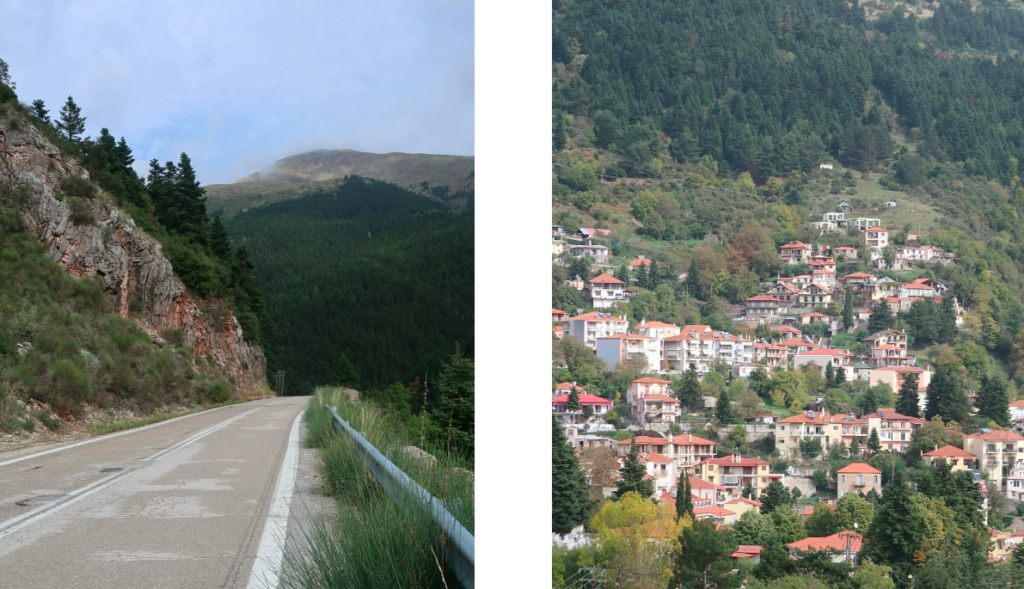
Our next stop was at a beautiful nursery, where in addition to flowers and shrubs, they sold huge trees. “People buy these when they don’t want to wait for the tree to grow by itself. They’re definitely more expensive, but you get shade from the tree soon, and it fits right into the garden’s aesthetic,” said the lady who takes care of and grows them. We ascended the emblematic Tymfristos mountain and shortly after, we stopped for a rest.
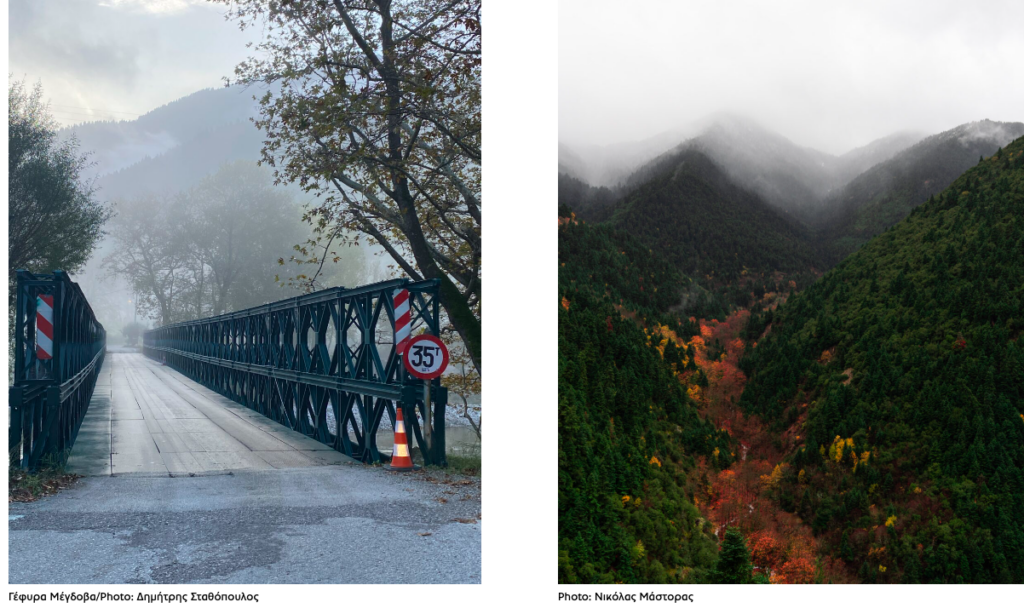
Karpenisi and Surrounding Villages:
We arrived in Karpenisi, and although we had decided to focus more on the villages and mountains of Evrytania, we made a brief stop in this city, perched on the slopes of Velouchi. From a distance, you notice the endless tiled roofs. If you walk in the center, you see the renewed sidewalks, lovely shops, and a calm city awaiting its winter visitors to give it more life.
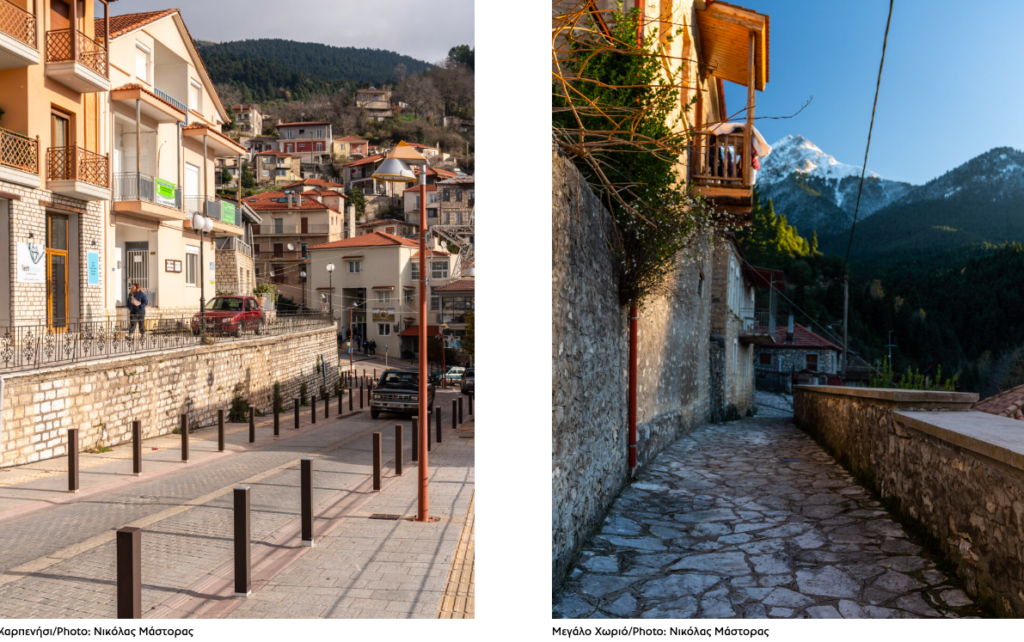
The Village of Fidiakia:
We continued towards the iconic village of Fidiakia, aiming to arrive during the golden hour, which would enhance the experience of the view toward the artificial Kremasta Lake. Traveling west from Karpenisi, towards Agrinio, we turned left after covering almost nine kilometers. From here, Fidiakia is 17 kilometers away, but between there are the villages of Milia and Sella, which are typical Greek mountainous villages. If you have time, it’s worth stopping by these as they offer an authentic experience of traditional rural life.
In the Heart of Fidiakia:
Upon arriving at Fidiakia, we left the car at the village entrance and walked through its beautiful cobblestone streets. You can make a full circle through the village, with the highlight being the spot from which you can enjoy the view of the lake. Here, there’s also the restaurant “Oichalia” (Tel: 2237024554), where apart from grilled meats, you can choose a soup of the day, typically chicken soup, and pies. We didn’t sit down to eat, as we had other plans.
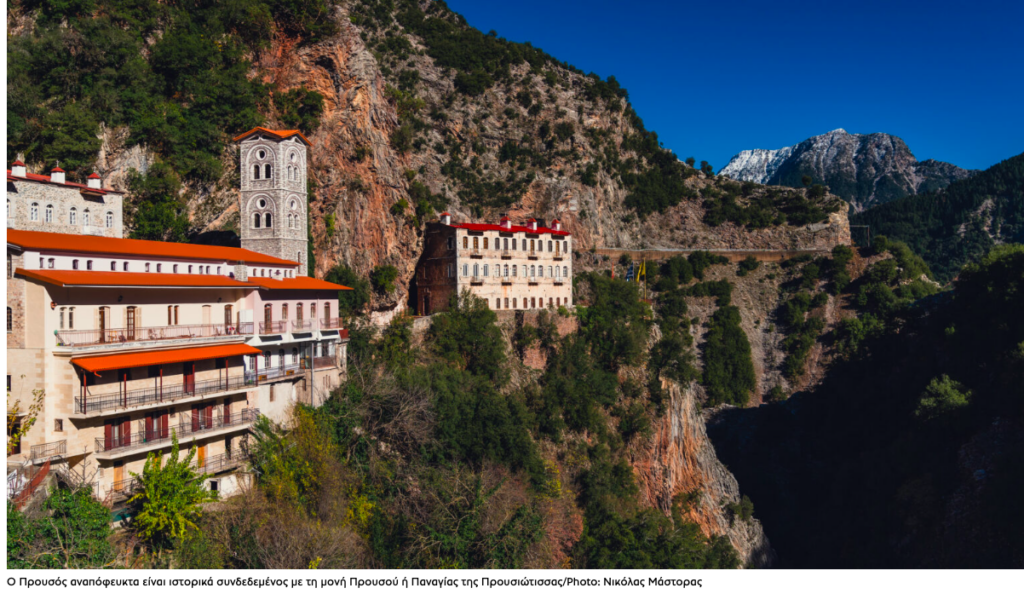
A Balcony with an Endless View:
We continued to the “most famous balcony” of the region, Tsagkaralona. From here, the view of Kremasta Lake is unobstructed, and you must make sure to include this stop in your itinerary. Kremasta Lake, created in 1965, is the largest artificial lake in Greece and, according to studies, the clearest. It lies in the regions of Evrytania and Aetolia-Acarnania, connected by the Epcopi Bridge. During its construction, over 15 villages were abandoned, and their inhabitants relocated, drastically changing the area’s topography.
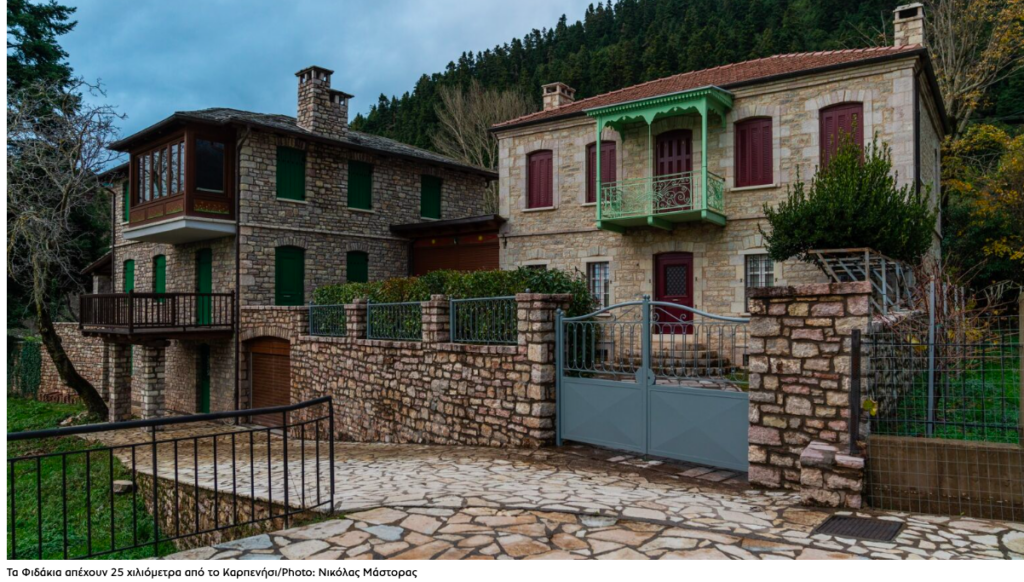
Off the Beaten Path:
From here, our destination was the Frangista region. You could choose either to return to the main road connecting Karpenisi-Agrinio or to continue towards the Epcopi Bridge. We decided to proceed cautiously, as the road, especially in winter, requires a four-wheel-drive vehicle and close attention to the conditions. We passed through the almost deserted village of Agia Vlachernas and the Ampelion, and came across the iron bridge of the Krikelion River, which led us to the beach area. Here, in summer, it is a meeting point for swimmers, with riverbanks resembling a large beach suitable for cool dives and sunbathing.
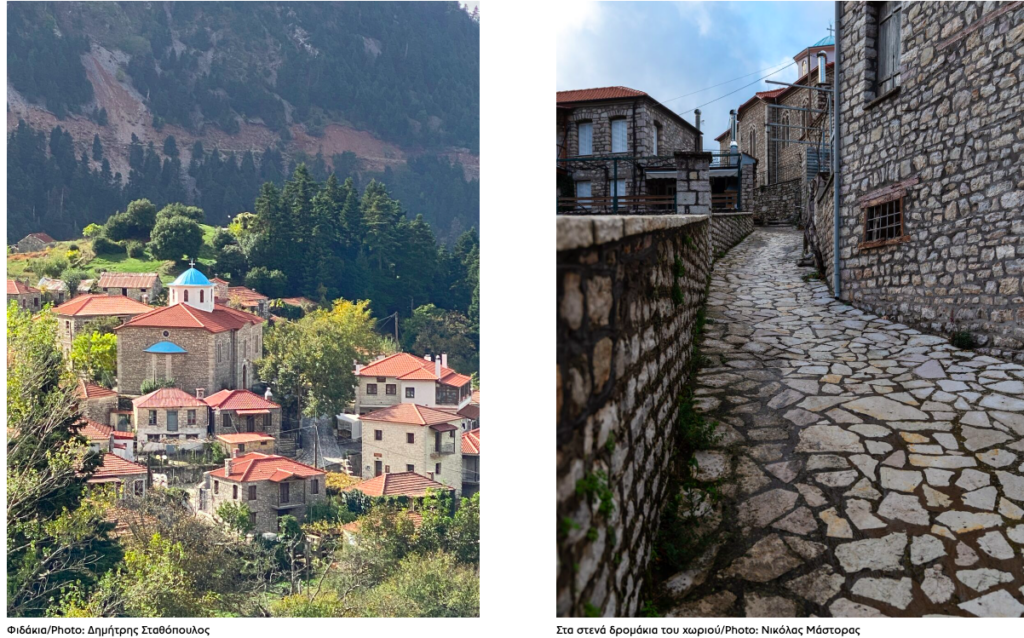
Arrival at Western Frangista:
Finally, we arrived at Western Frangista, located 635 meters above sea level. This village is also a base for activities around the lake. We spent the day relaxing in the village, enjoying homemade meals from Chrysa’s house. Afterward, we walked through the village, still vibrant despite the winter setting, and planned for the next day’s adventures.
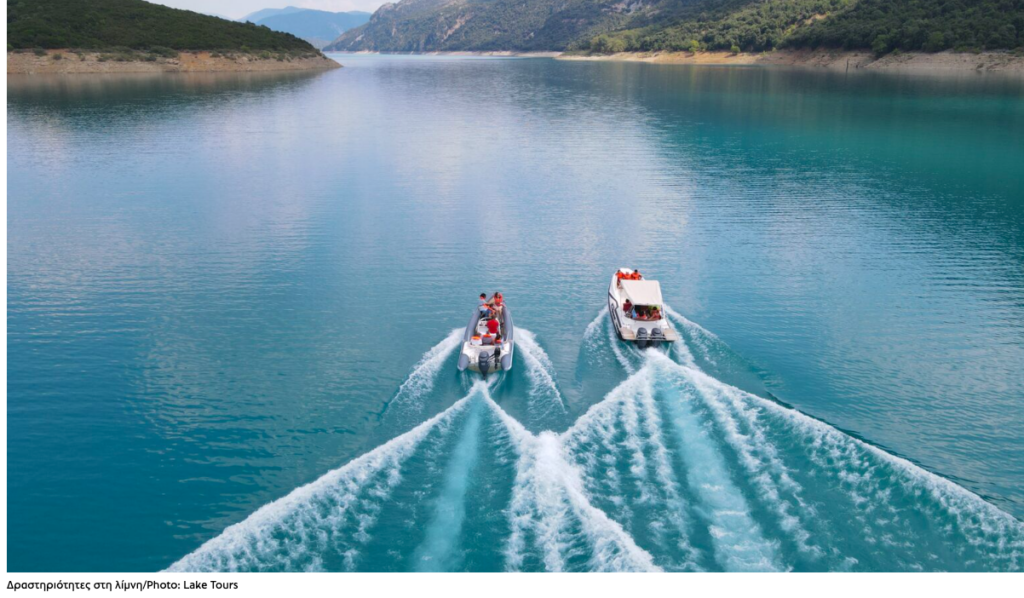
The Mill and Water-Press:
We visited the historical mill and water-press located between Eastern and Western Frangista. The Galanos family still operates the mill, grinding wheat and corn, using water power. The scenic area was full of wooden crafts and the beautiful wood carvings of Mr. Charalambos, who works during the winter months when farm activities slow down.
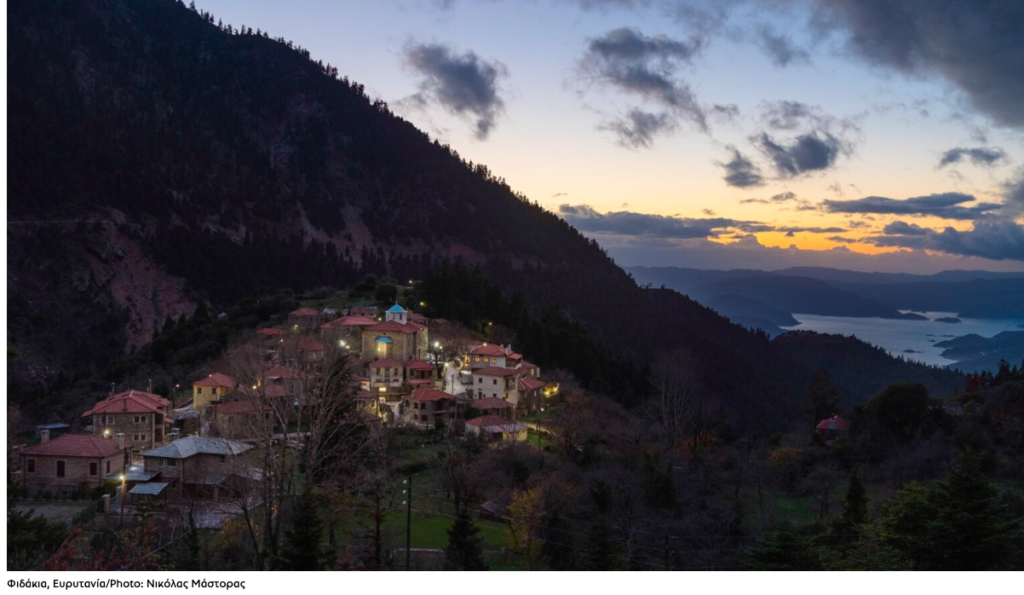
In the Historic Sotira:
Another gem of the region is Sotira, just past Eastern Frangista, named after the church of Sotira, built in 1725. The church is a historical monument with a unique wooden temple and chandelier. We walked around the church, among the many plane trees and flowing waters.
Activities on Kremasta Lake:
The next day, we joined Panagiotis Makris from Lake Tours, who guided us through the various activities available on the lake. Depending on the time and mood, we chose between a short boat ride lasting about half an hour or a longer one lasting over an hour, exploring the submerged monastery of Panagia Episkopi and the surrounding fiords.
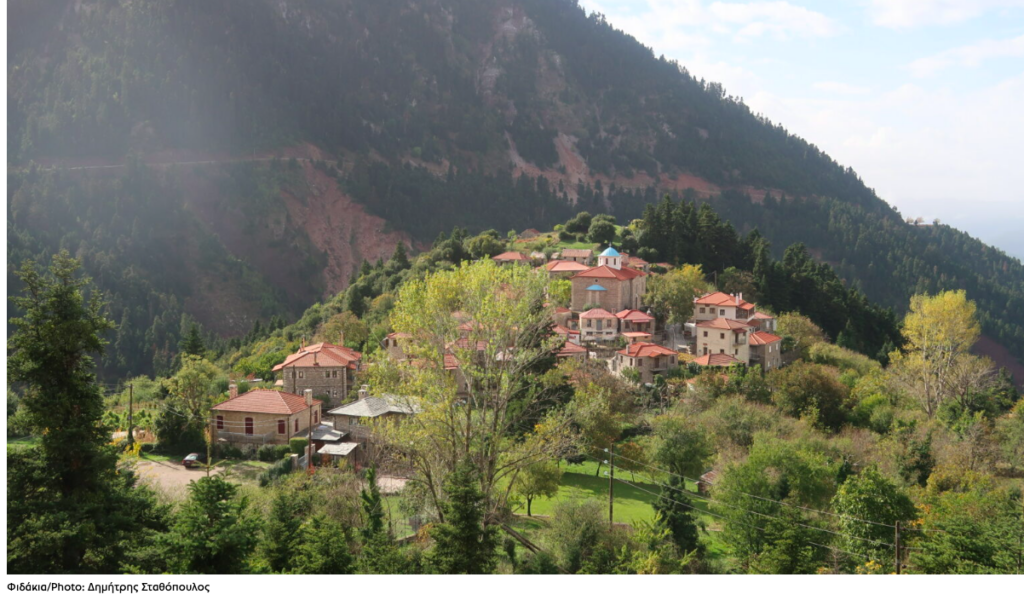
The Return Journey:
On the way back, we took a different route, passing through the historic Vinniani, where the first “mountain government” was established in March 1944, and continued to the metal bridge of Megdova. We passed through beautiful forests and returned to Karpenisi, feeling rejuvenated by the experience.
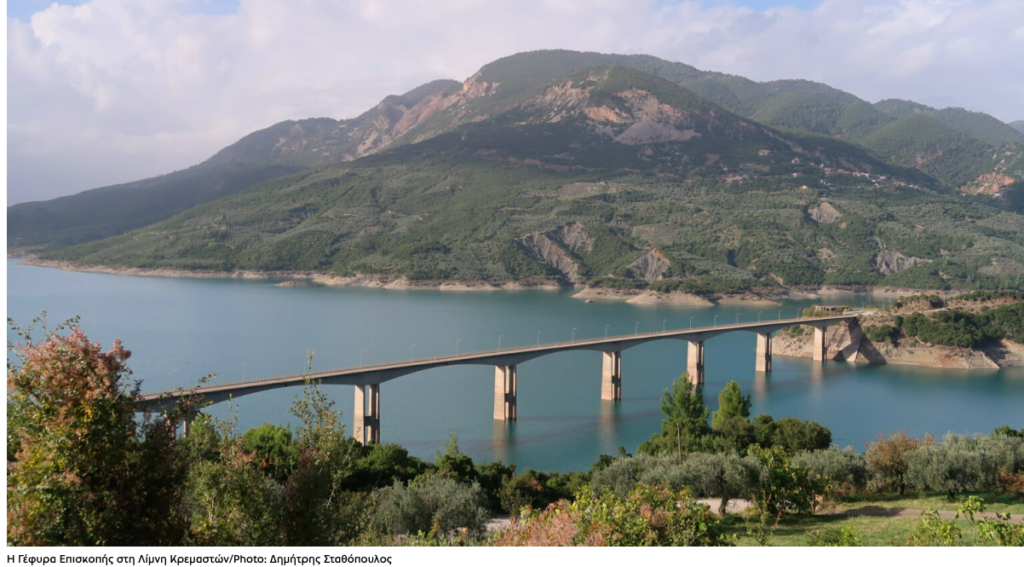
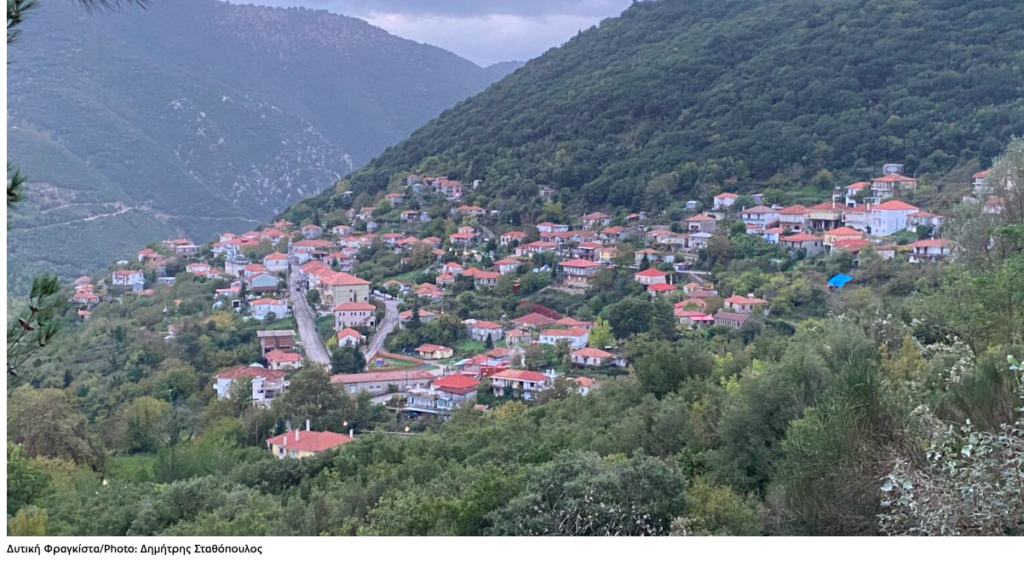
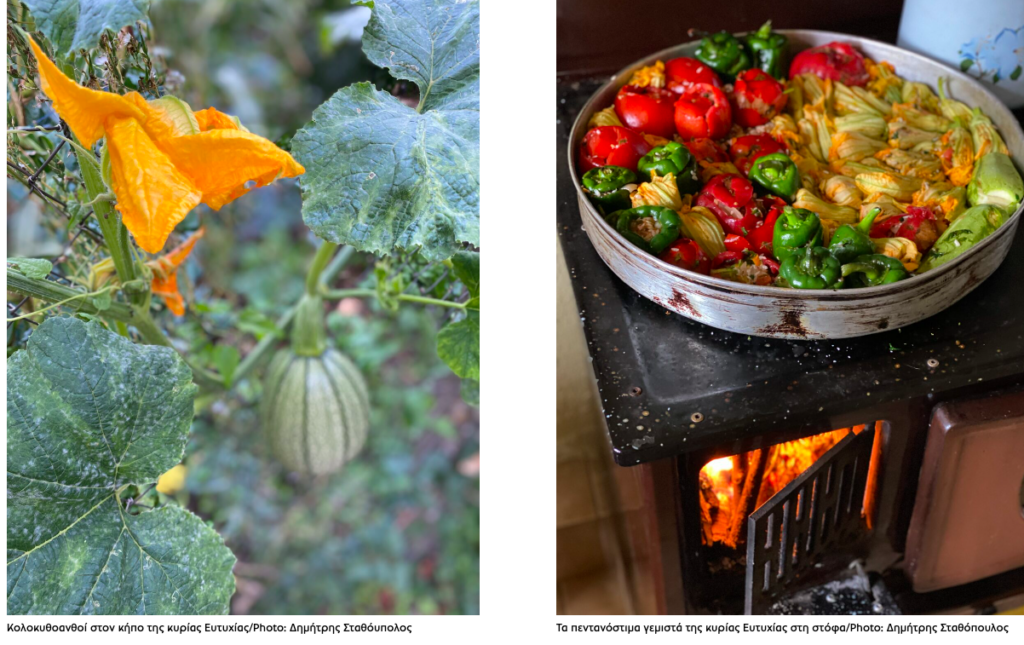
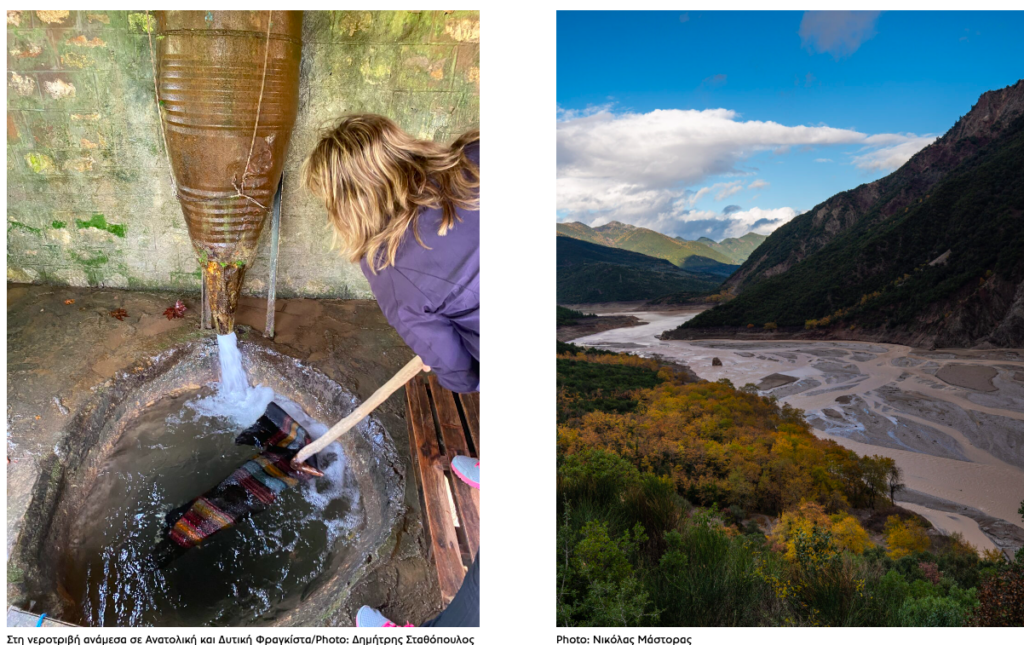
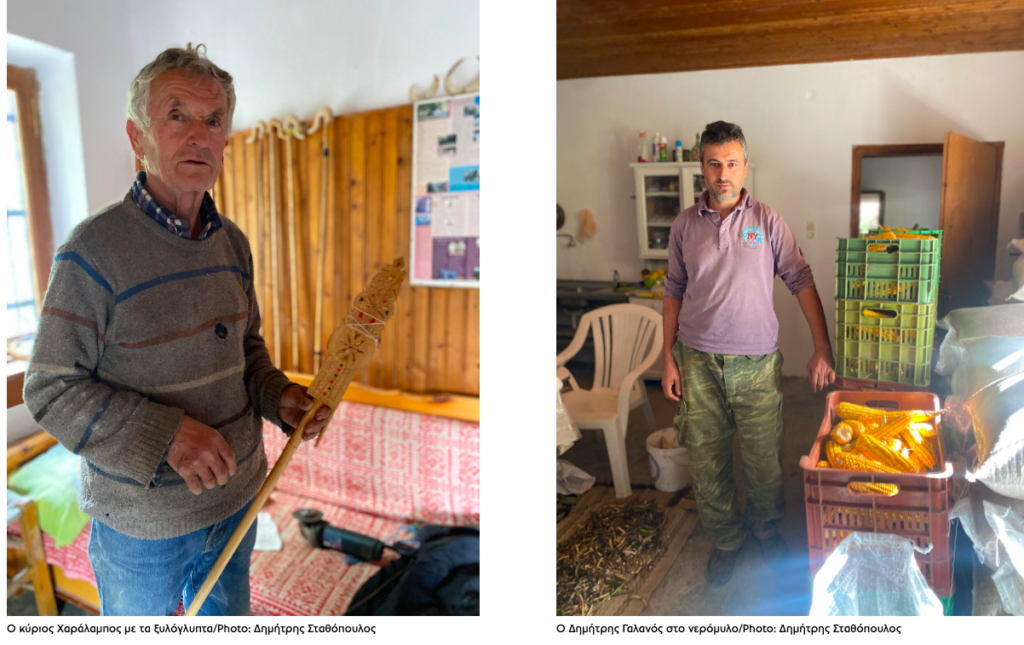
Ask me anything
Explore related questions
